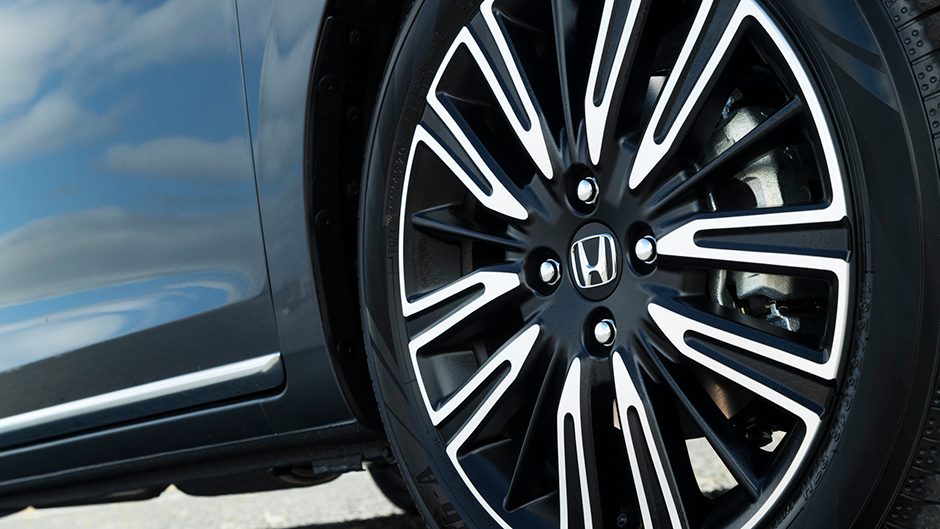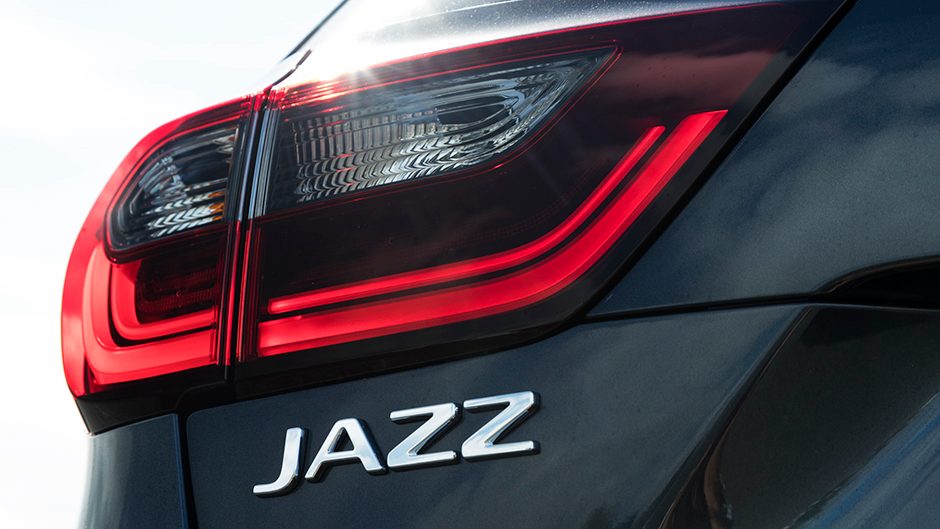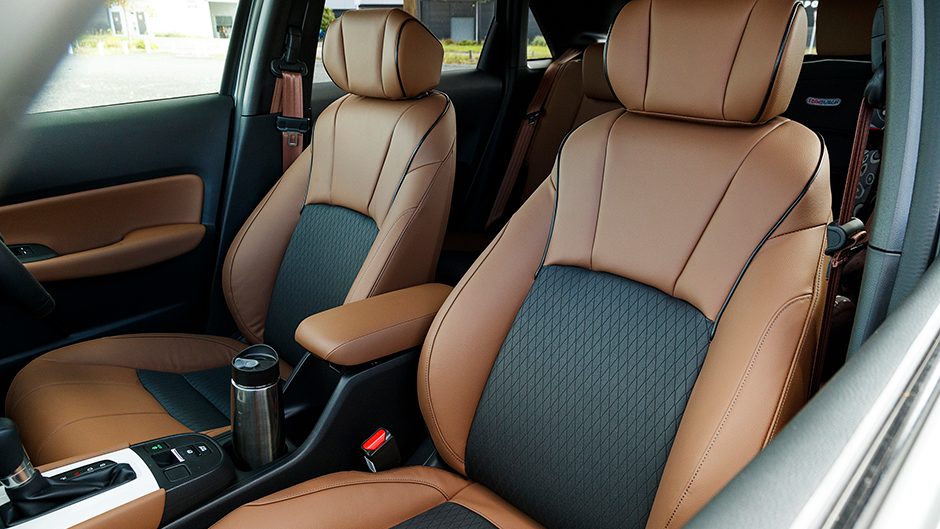2021 Honda Jazz e:HEV Luxe review
Words Kyle Cassidy | Photos Tom Gasnier
The Jazz is back, now in its fourth generation. It follows the nameplate’s original philosophy of a small car that’s big on space, and now comes propelled by a new hybrid system. We check it out.
Honda revealed its new Jazz back in 2019 at the Tokyo Motor Show. We thought it would be a shoe-in for the NZ market, given its following but the situation wasn’t so clear cut. Australia declared it was not interested, casting some doubt for our market, but after some to-ing and fro-ing Honda NZ confirmed the fourth-gen Jazz would indeed be offered here.
It’s taken its good time to arrive, however, Europe given priority thanks to the vehicle’s hybrid credentials but it’s finally here and we managed to get an early drive prior to its national launch later in the month. While we can’t reveal the all important price (it hadn’t been finalised) the provisional numbers shared for each of the three models are competitive.
The smalls market is a shrinking segment where some players no longer exist and model lines have been pared back. But Jazz has a big following here, helping secure the model for our market. And so there are three models, starting with Life, a better specified car than the S it replaces, complete with a 1.5-litre engine. Then there’s the Crosstar, Jazz’s alter ego with its SUV-like styling, and topping the range, is the Luxe, the only model to feature the new hybrid powertrain.
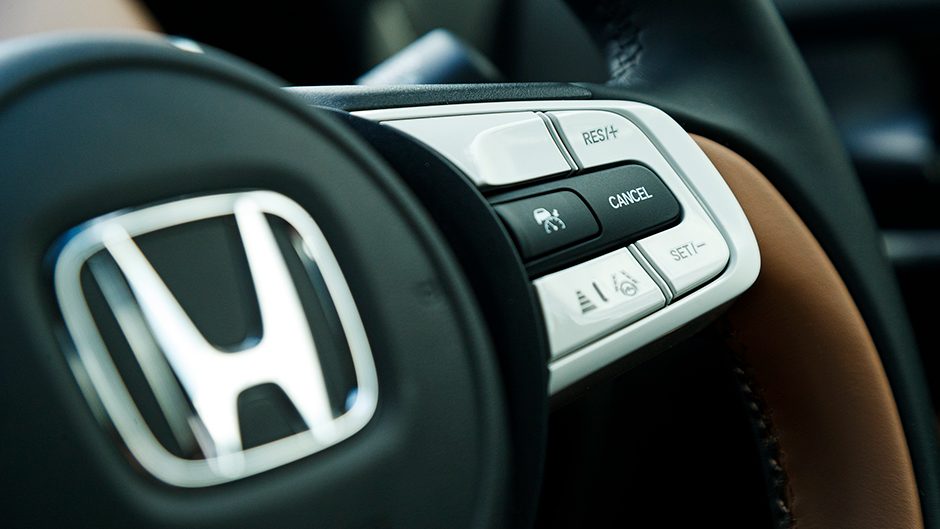
It’s a hybrid Jim but not as we know it
Honda hybrids of old used the integrated motor assist system, a small electric motor used to boost the engine when extra go was required. This however, is a completely new concept. It uses a 72kW/127Nm 1.5-litre Atkinson cycle four (with a claimed thermal efficiency of 40 per cent) which is paired with two electric motors, one a generator the other an 80kW/253Nm propulsion unit. The hybrid system has a tricky arrangement of components, so pay attention people. The 1.5 engine spins the generator while the propulsion unit does the wheels. There are three distinct drive modes. In Hybrid drive mode, the engine powers the generator, and the electricity it makes is fed directly to the propulsion motor, which turns the driven wheels. This is a key difference of the Honda HEV system, one that doesn’t have a transmission as such. It has a single, fixed ratio gear for a ‘direct connection between the components’. In the Hybrid mode, the generator can also charge the battery, and the propulsion motor can receive assist power from the battery pack.
In EV mode, the propulsion motor gets power from the battery exclusively, the engine being switched off. When the hybrid brain deems that the engine is the most efficient power source, a clutch pack arrangement can initiate Engine drive mode, the generator and electric motor taken out of the equation. These mode transitions all happen automatically. At sub 40km/h type speeds, it works mainly in EV mode, providing the battery is sufficiently charged. At speeds between 40-80km/h, it switches between EV and Hybrid. On the motorway, it’ll move between Hybrid and Engine mode (very occasionally slipping into EV mode), and then when you’re going for, it’ll be in its Hybrid mode exclusively. Regenerative braking helps top up the lithium ion battery under the boot floor.
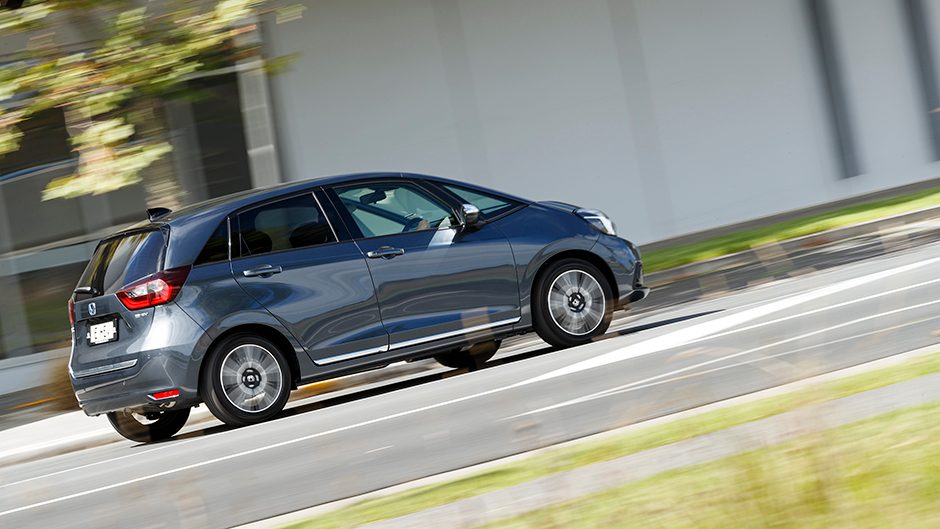
Damn it Scotty I need more power
Well this is more about economy than power, Jim. Total system output is pegged at 80kW and as to consumption, there’s a Japanese economy rating circa 2.8L/100km but the European WLTP testing states 4.5L/100km. So you can expect to get something in between these. It all depends when, where and how you drive. We did some urban rambling in the middle of the day with the traffic free flowing and the trip computer suggested an average of 4.2L/100km over 60km. On the morning commute, the trip registered 2.7L/100km thanks to the EV mode in the slow motion traffic. A distance to empty of 950km was showing with the tank full, so trips to the gassy are going to be infrequent.
This is an electric-first system with the motor getting things underway, and if the conditions permit (easy acceleration, generally flat road ahead, and a charged battery) it’ll EV along happily. It’s a torquey thing at town speeds, accelerating briskly in Hybrid mode. No EV range is given as such, too many variables involved there, and it’s not huge. Hybrid mode kicks in when the battery level dips to thirty per cent, and when you add throttle. However, it can accelerate beyond 50km/h in EV mode, and does (slight) hills okay too. And the suspension is alright over the bumps as well, the town and around ride pretty relaxed, and the turning circle excellent, as you’d expect of Jazz.
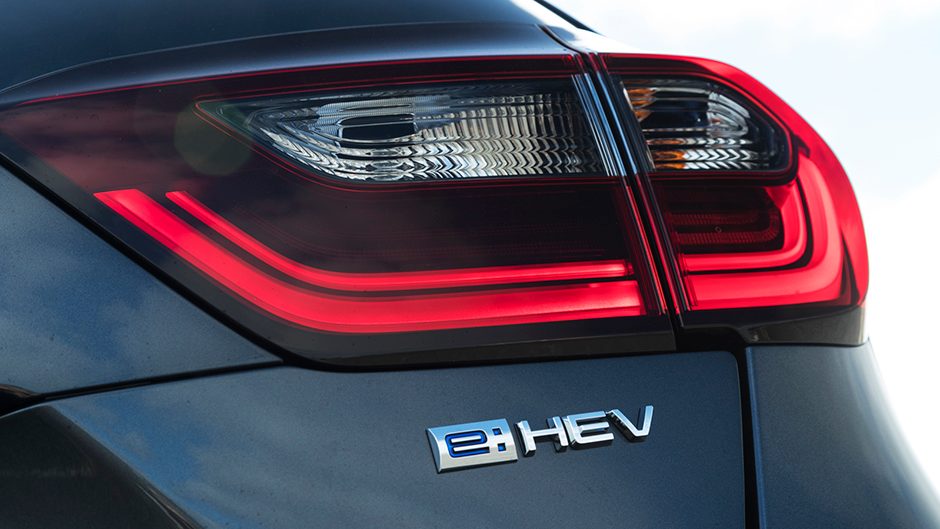
The transition between drive modes is smooth. As the engine and the driven wheels aren’t connected, the hybrid system can operate the four cylinder independently from wheel speed to make sure it’s in its most efficient power band. This explains why sometimes the engine sounds like it’s working harder than necessary for the speed you’re actually travelling.
But you really don’t need to overthink it. Honda hasn’t provided the means to mess with the system (no EV mode button) as they’ve spent many engineering hours ensuring the system maximises efficiency. You can add stronger regeneration by pulling the gear lever to its B mode, but that’s about it.
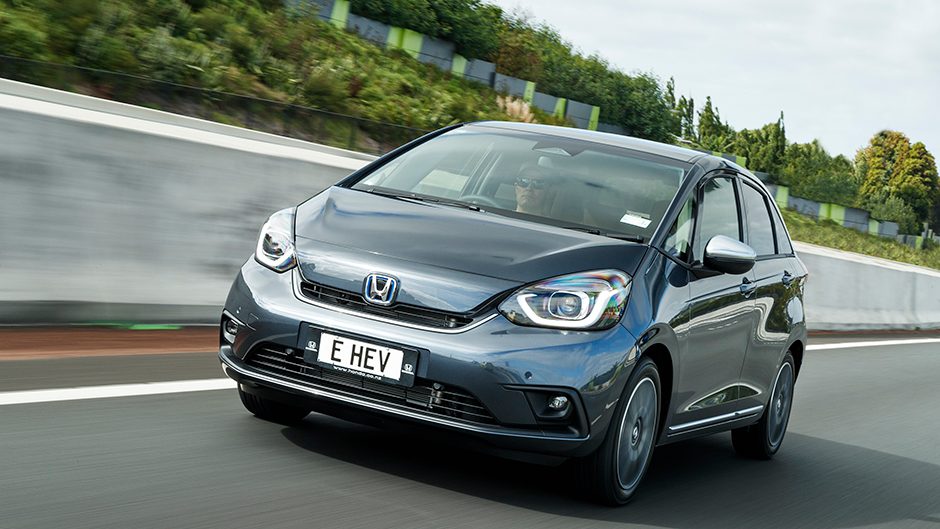
Given’ her all she’s got
The Jazz doesn’t quite get the heart rate pumping in the bends, but that’s not its reason for being. It’s a well planted, predictable sort of set-up. The steering is quick so it turns easily, aided by the ‘Agile Handling Assist’ (small brake inputs to the inside wheels) which also helps it stay the course. There’s some minor wriggling from the rear but the Jazz damping is now more accomplished over the major dips and bumps. There’s been the usual attention to reducing road noise and while the suspension action is hushed, the din of the coarser road surfaces can still permeate the cabin.
There’s some lag to the request for added go before the system stirs, but it gets the hint and whips things along. The engine gets rowdy when the throttle’s pinned to the boards, but somehow they have managed to get the hybrid system to perform mock ‘upshifts’ to stop it wailing away. How do you do that without a trans? You’ll need a decent stretch to get the pass done, but it’s a competent main road cruiser, and even when given a hard time the average fuel use only peaked around 7.0L/100km.
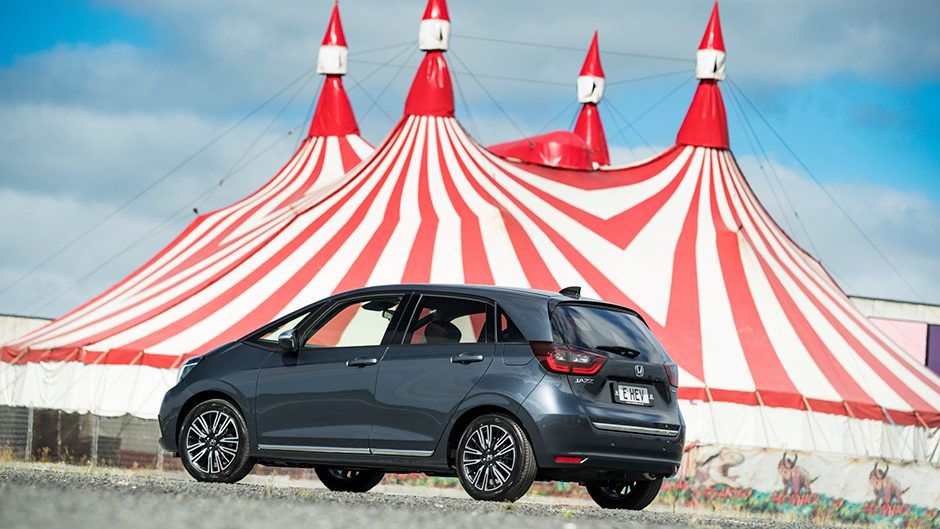
It’s logical captain
The new Jazz takes an evolutionary form, with a more up-right front end and a sloping rear screen. It has a friendly face, but the simple approach to the side profile had the design critics here labelling it boring and formless. The Crosstar looks more like it. Pity there’s no hybrid version of that. It brings crossover-like styling elements with plastic cladding around its base, and a slight rise in ride height (25mm all up, including the higher profile tyres). It has a unique front end while the glasshouse and roof are blacked out.
Jazz gains a new chassis but it conforms to the original philosophy with a flat floor and the fuel tank positioned beneath the front seats. The overall length is up only a smidge to 4044mm, it has a similar width to the old model, and it’s slightly lower while the wheelbase is down 13mm to 2517mm.
The stiffer structure enjoys redesigned suspension, still with a rear torsion beam for ultimate interior space and the geometry up front has been tweaked for more agile steering. Its rack now has a quicker ratio and the assistance is more natural.
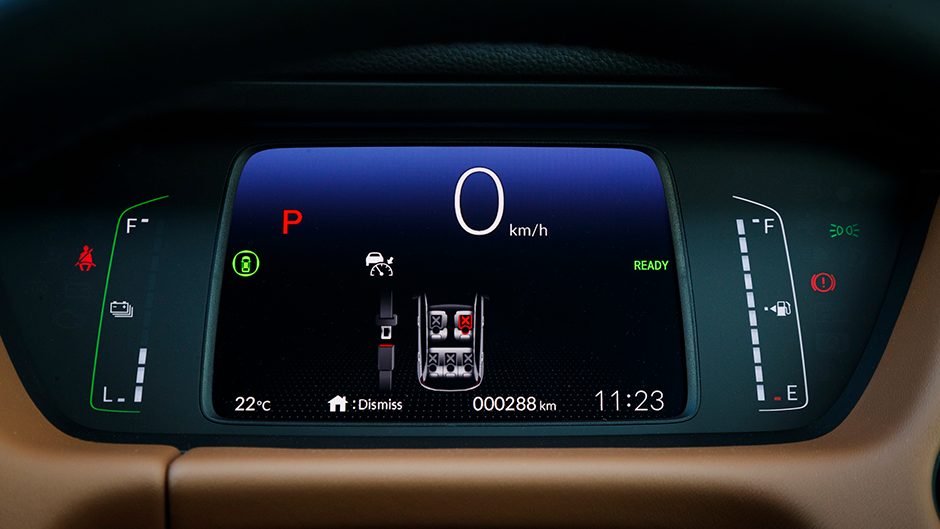
They’ve revised the front pillars to maximise forward vision for the driver and the view out is a true widescreen experience. The interior design and ambience take a step up; it’s well constructed with few points where it looks made to a small car price, save for the hard door tops. The new seat design is more supportive and while there’s not a huge amount of adjustment, the cushioning is generous. A tall seat height makes for easy in and outs too. It’s the same for the rear with wide opening doors where oodles of leg- and headroom await.
We like the two-spoke steering wheel while the seven-inch TFT screen puts the vital info in front of you, the menus shuffled through easily. The touchscreen is vastly improved with better graphics, functionality and quicker responses. There’s no sat nav but you can plug the phone in for Android Auto, or there’s wireless CarPlay. This Luxe has the Honda Sensing safety system, the lane departure not too insistent and while there’s active cruise it only works above 30km/h.
While the boot isn’t quite as large or deep as it used to be (304L vs 359 for the old model) it’s still the class load master, the small car you buy when you sometimes need a delivery van. The tailgate opening is large and low, the Magic seat folds down easily, the battery pack only giving a minor bump up in the floor. With seats folded and piling it to the roof, there’s 1199L, 100 less than previously, and there’s a small storage spot under the floor, but no spare tyre.
Honda calls its new Jazz ‘a comfortable partner for daily driving’ and that’s precisely what it is. It’s not terribly exciting, but the hybrid is a fuel miser, it’s technically interesting and overall the Jazz is still a great small car.
| Model | Honda Jazz Luxe eHEV |
| Price | $35,000 |
| Engine | 1498cc, IL4, DI, 72kW/131Nm |
| Drivetrain | single-speed auto, front-wheel drive |
| Fuel Use | TBCL/100km |
| C02 Output | TBCg/km |
| 0-100km/h | 9.65sec |
| Weight | 1203kg |



